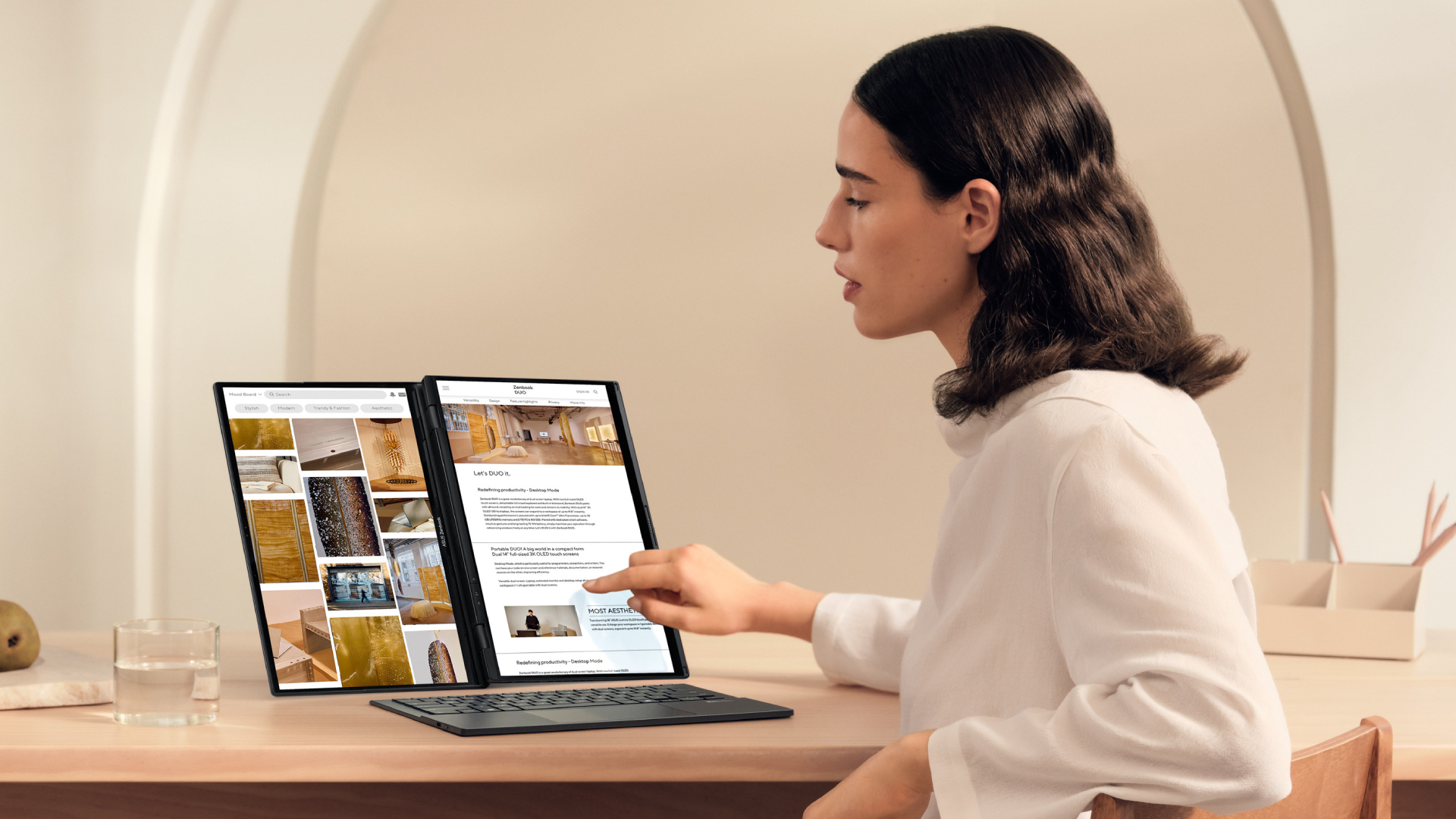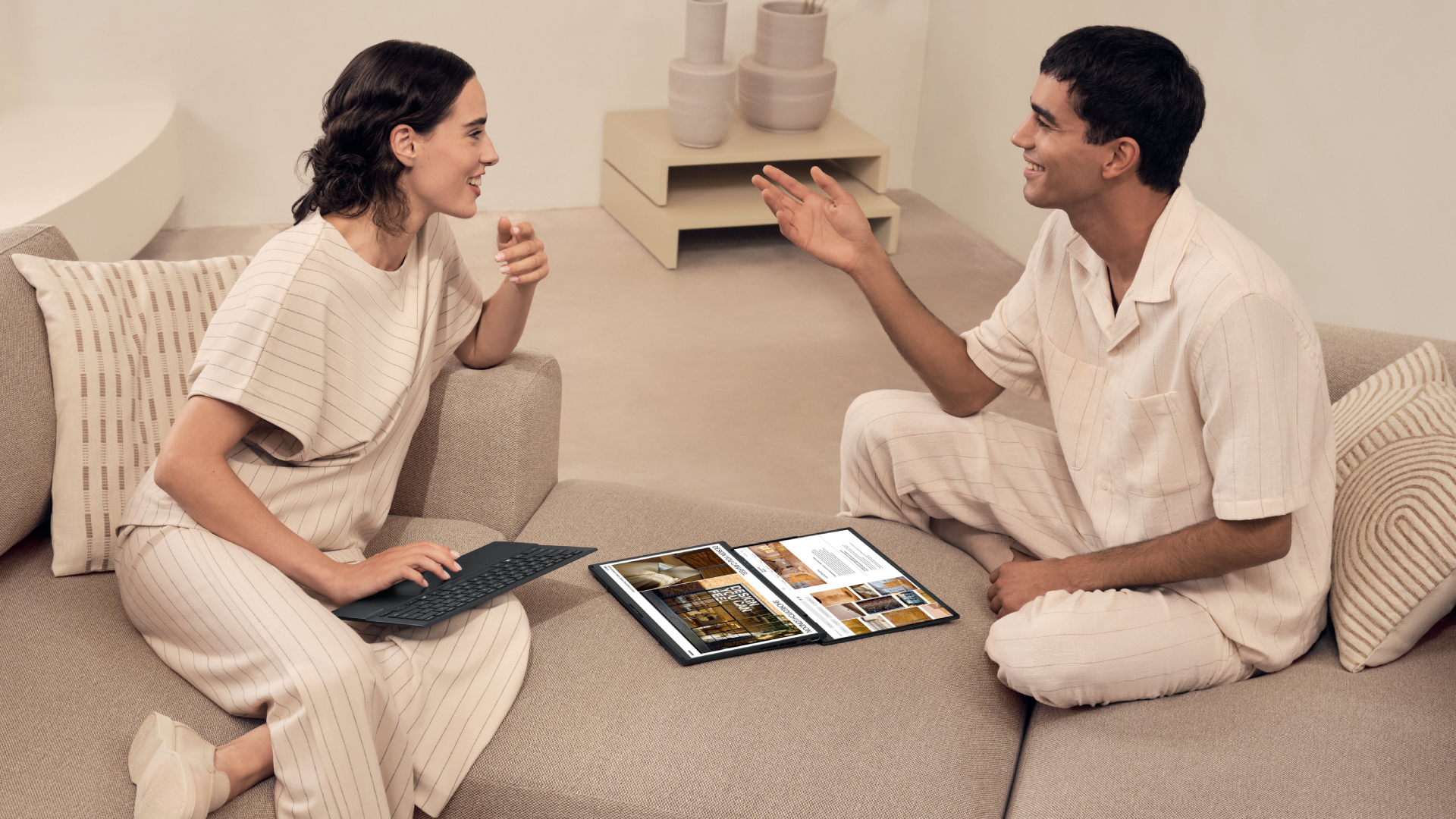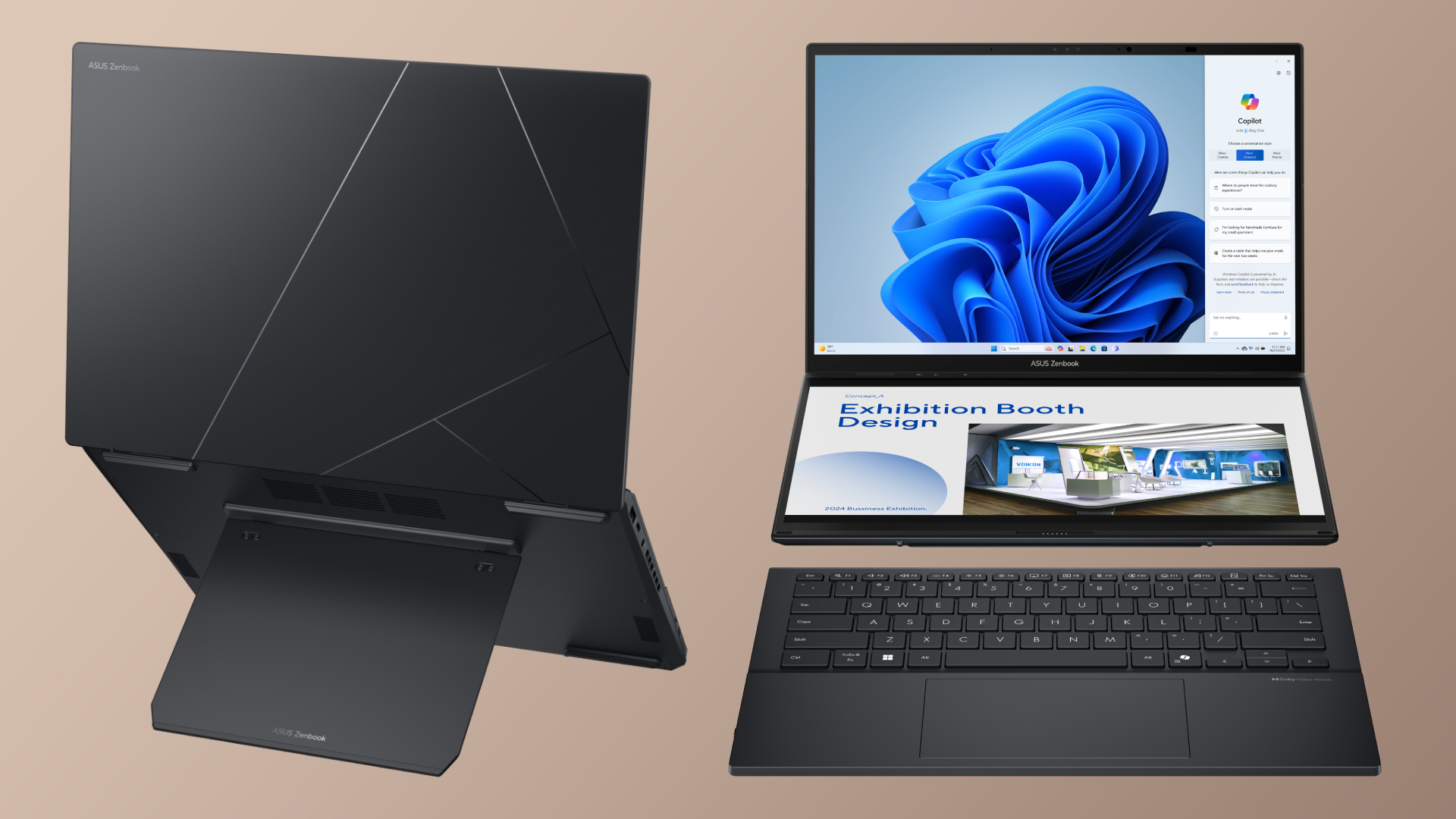
Asus has unveiled its new line-up of AI-powered laptops at CES 2025, giving us a first look at what we can expect from the new Zenbook A14, Vivobook 14/16, and more. Beyond that, the Asus Zenbook Duo is seeing a refresh with Intel's latest processor.
I reviewed the original Asus Zenbook Duo last year and called it a "great dual-screen laptop," highlighting its fantastic performance, affordable price point, solid battery life, and satisfying keyboard. Most importantly, its dual-screen feature was responsive and well-implemented.
The latest Zenbook Duo model is a pretty simple upgrade, bringing the series into the next generation of Intel's processors with the Intel Core Ultra 9 285H. Otherwise, it features the same gorgeous two 2,880 x 1,800-pixel resolution OLED panels at 120Hz refresh rate, up to 32GB of RAM, up to 2TB of SSD storage, and a 75Wh battery.
The original Asus Zenbook Duo also featured a more affordable option bringing the dual screens down to 1,920 x 1,200-pixel resolution at 60Hz refresh rate. It's rated to be less colorful and bright, with our tests bringing it down to 351 nits of brightness and an 81% coverage of the DCI-P3 color gamut. On the other hand, the 2,880 x 1,800-pixel resolution models are rated at 500 nits of brightness and 100% DCI-P3 color gamut coverage. However, we haven't tested that for ourselves, so we're unsure how close it gets.
Due to the nature of what the Zenbook Duo tries to accomplish, with a screen both in the lid and the deck alongside a magnetically attachable keyboard, it needs to be sturdily built so it doesn't crumble in your hands. And thanks to its US MIL-STD 810H standard certification, it's in a good position to survive accidental drops and other misfortunes. These tests ensure it has been put through conditions potentially relating to high or low temperatures, moisture, shock, and more.



If you're wondering exactly how this device works, it's simple: The deck and lid are two touchscreens attached by a sturdy hinge. Within the deck, there is a magnetic attachment that allows the keyboard to lock into place. When removing the keyboard, you can flick a switch on it to activate the Bluetooth pairing and utilize it wirelessly, allowing you to use the keyboard while looking at the two screens simultenously. To charge the keyboard, simply use the USB Type-C port on the side.
Keep in mind, all displays will sap battery life, and that's especially evident in our tests of the original Asus Zenbook Duo. On the Laptop Mag battery life test, which involves continuous web surfing at 150 nits over WiFi, the laptop lasted 10 hours and 34 minutes while only using a single screen. That number dropped down to 8 hours and 22 minutes under the same conditions with both screens on, so if you're low on battery, the second display is best kept off.
I already fell in love with the Asus Zenbook Duo when I reviewed it, and considering this model is simply a refresh with up to the latest Intel Core Ultra 9 285H processor, it's essentially just the same great laptop but with a new, fancy processor. Beyond improving performance, we expect to also see improvements to battery life.







